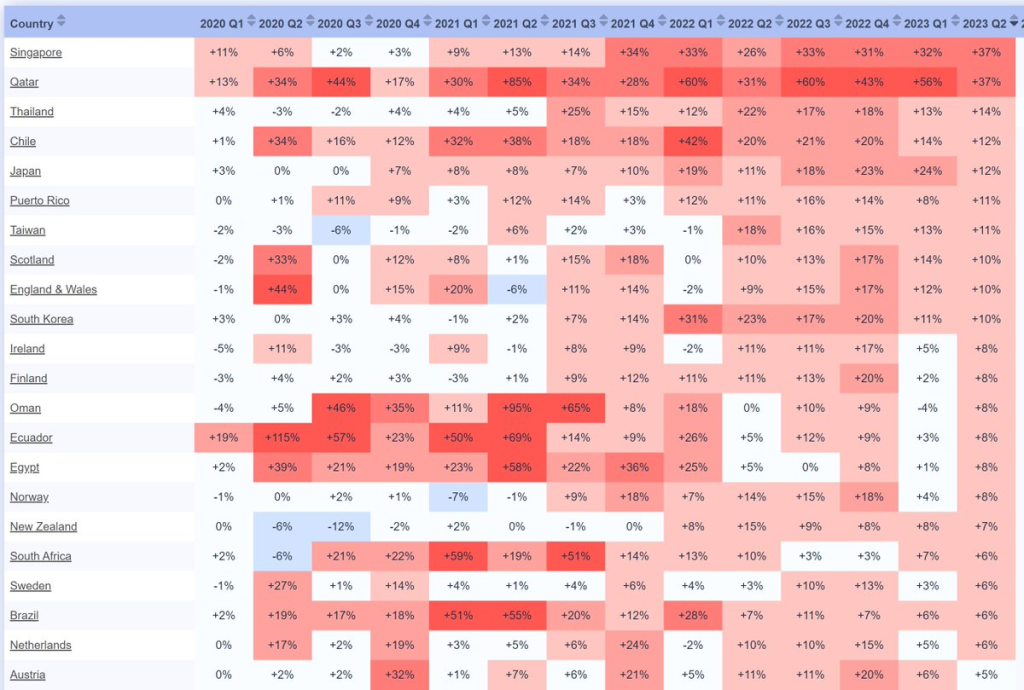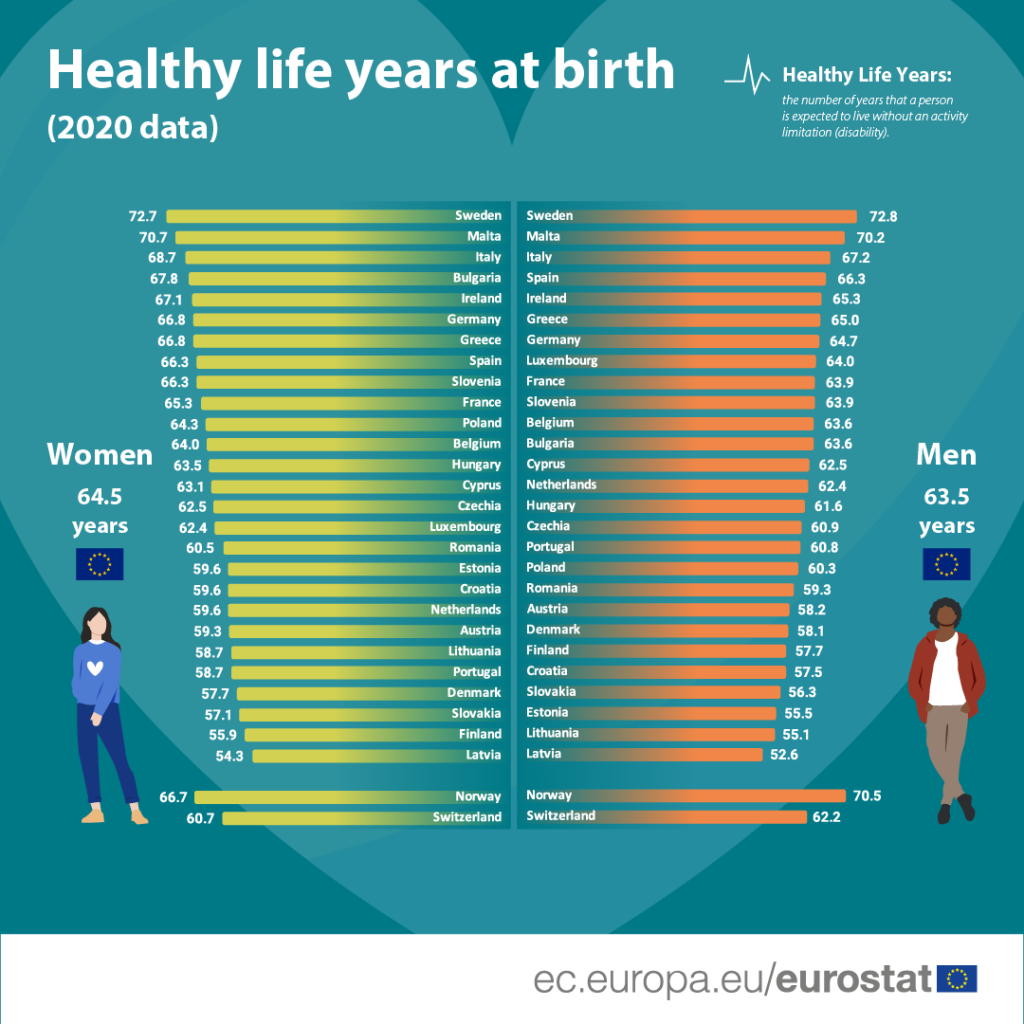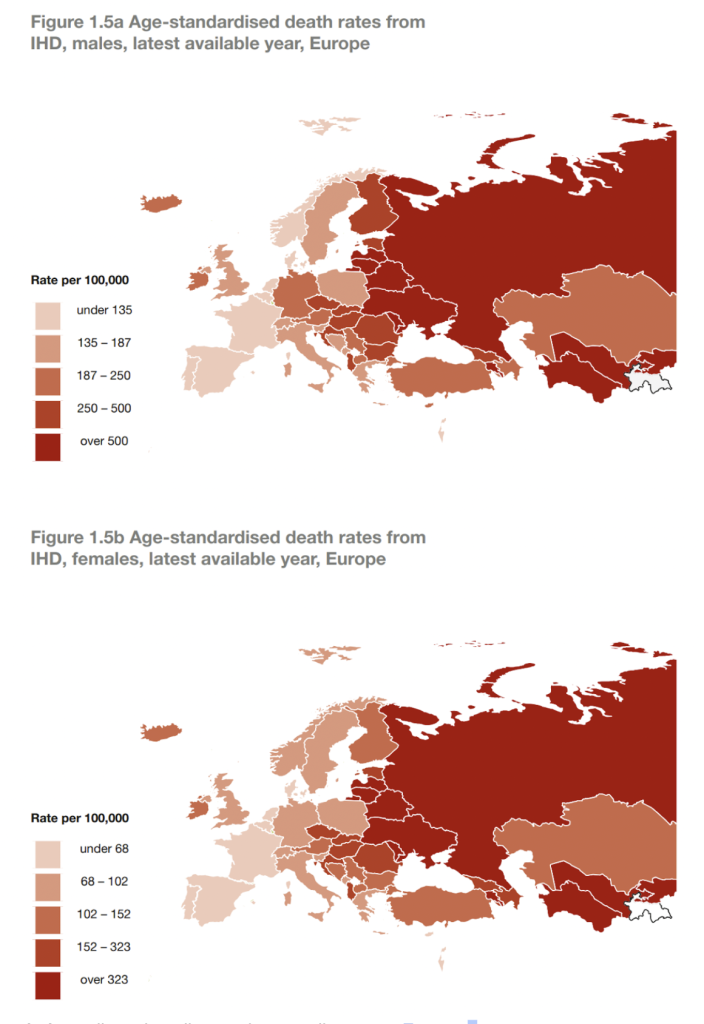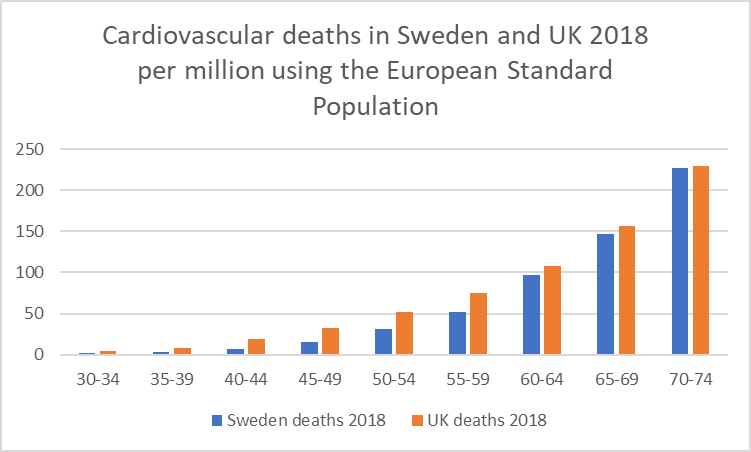
Why Sweden has fewer excess deaths
Also available on Substack – Come and join the conversation with open comments
When calling out the excess mortality after the covid vaccination campaign, the claim that Sweden disproves an association with vaccination is frequently raised. Why is it that Sweden has only a small excess, and some claim none when adjusted for age?

Whenever looking at death statistics there is always a trap of forgetting that everyone has to die of something in the end. When cancer death rates improve, cardiovascular death rates inevitably rise. Sweden has a higher life expectancy than the UK and so the pattern of deaths from different causes is different at different ages. In fact, Sweden has the longest healthy life expectancy in Europe. Having lived a healthy life, there still needs to be a cause of death at the end.

The excess deaths that have been seen are predominantly cardiovascular, due to either ischaemic heart disease or heart failure. Both these causes of death have as their underlying pathology narrowing of the arteries that supply the heart with atherosclerosis. Atherosclerosis is a process that can take many years and there are numerous factors that can increase the risk.
Superficially Sweden has similar age adjusted mortality for cardiovascular causes as the UK (see fig 3).

That does not mean that at every age the risk is the same – far from it. In fact reality is a long way from that. The way that an age adjusted mortality rate is calculated is to use an imagined population with an representative distribution of each age group. The risk is then projected on to each age group and the deaths in this idealised population are added together to produce the overall mortality rate.
If we took UK data and imagined a country that had a cardiovascular mortality rate in the under 80 year old population that was half the rate in the UK but had a 70% higher mortality rate in the over 80s (who have to die of something in the end) then you could still have the same overall age adjusted mortality rate.
The case for Sweden is similar to this. The risk in the under 50 year olds is half the risk in the UK, it then increases reaching similar levels by the age of 70 and with higher levels in the over 80s in Sweden. The overall age adjusted mortality rate is in fact higher in Sweden than the UK despite there being more deaths in every age group under 80 in the UK.

To put it another way, based on a European Standard Population, 1% of cardiovascular disease in Sweden are under the age of 50 compared to 3% in the UK. The under 85 year old population make up only 47% of Swedish cardiovascular deaths compared to 59% in the UK. Even compared to neighbouring Finland, the Swedish population has cardiovascular deaths at a later age.
| Under 70 years | 70-85 years | Over 85 years | |
| UK | 19.0% | 39.5% | 41.6% |
| Finland | 15.8% | 36.8% | 47.4% |
| Sweden | 12.2% | 34.6% | 53.2% |
| Under 40 | 40-49 | 50-59 | 60-69 | 70-80 | 80-85 | 85+ | |
| UK | 19 | 51 | 127 | 264 | 565 | 393 | 1010 |
| Finland | 17 | 40 | 134 | 317 | 675 | 507 | 1524 |
| Sweden | 9 | 22 | 84 | 244 | 569 | 448 | 1567 |
This significantly lower cardiovascular risk in younger age groups is important. It means that the underlying risks for cardiovascular disease are lower. The fact that more 80 year olds have deaths attributed to cardiovascular disease is a function of a healthier society with fewer other causes of death. Any additional risk from vaccination in a population who have lower underlying risk will not have the same impact – at least not in the short term.
If you were to pick a country that would be least affected by an additional cardiovascular risk, Sweden would be a good choice. Could this explain why their excess deaths are lower than many other highly vaccinated countries?
